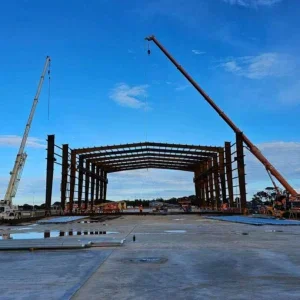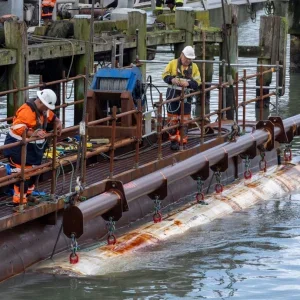The intake tunnel being excavated in two parts. The first s a 6km drive and the second is a 4.4km drive. A drill and blast section will connect the two drives, making a total 12km length. The tunnel is located some 360km south of Santiago, Chile and is in the mountainous Maule Region. Overburden is 500m and two types of rock are expected to be encountered, sedimentary and volcanic, which will be up to 100 MPa UCS. The alignment will cross at least two fault zones, the first of which has already been crossed and comprised rhyolite, andesite, tuff, and breccia.
A Robbins spokesperson added: “To cope with the conditions, including steadily increasing water inflows at rates of up to 3,500 l/min (925 gal/min), the contractor is utilising cementitious grouting and chemical grouting with polyurethane and foam. Such ground conditioning techniques were anticipated and the machine was designed to effectively apply these techniques.”
The tunnel is lined with precast concrete segments measuring 250mm thick by 1.2m long in a 4+1 configuration. The TBM is currently advancing at a rate of 25 rings for every 20 hours of boring. Crews are working in two 10-hour shifts with one four-hour shift dedicated to maintenance.
The tunnel is 2,500m above sea level, and remote. “The location of the work is a big constraint due to its rugged terrain and geographical location in the Andes. With all this, we are anxious to perform work in an efficient manner,” said Pello Idigoras, tunnel production manager for contractor Ferrovial Agroman. Transport of equipment and supplies to site is on unpaved mountain roads.







